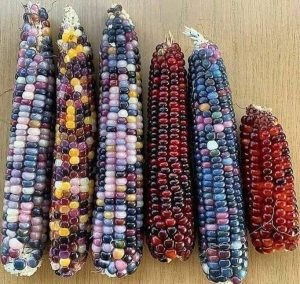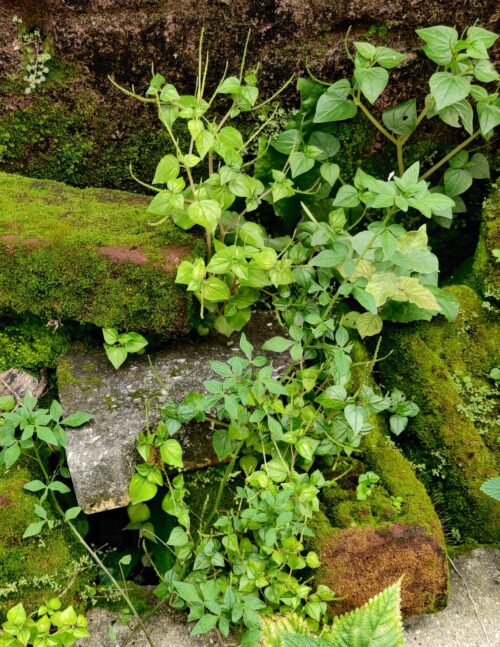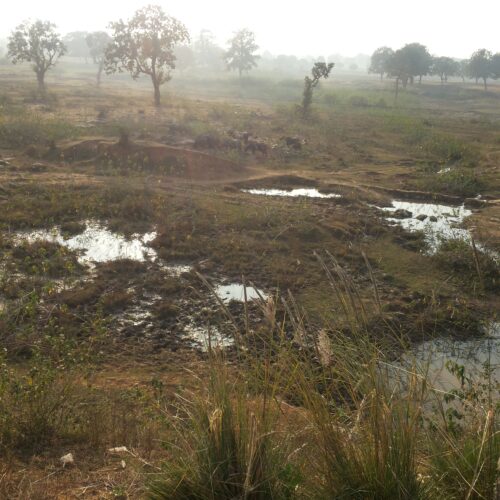We know that different types of plants and animals have been blessed with peculiar and important merits. These merits are expressed in plants and animals due to specific genes found in them.
What is Genetic Erosion?
In the race of modernization, all the countries of the world especially the developing ones are passing through acute competition of raising agricultural and industrial productions. Under these conditions so many of our traditional varieties of plants and animals have been and still are being neglected. Only the hybrid and high yielding varieties of crops and animals are being domesticated. As such, a number of indigenous varieties have become either extinct or endangered. This is called as Genetic Erosion.
According to a definition-
The process whereby an endangered species of plant or animal disappears or goes extinct when individuals from the surviving population die off without getting a chance of developing in numbers their already low population, is called as Genetic Erosion.
Merits of Indigenous Varieties
The indigenous varieties of plants and animals have capacities of resistance against adverse conditions of environment and a number of diseases as these varieties contain specific genes for these special traits. The genetic diversity in our traditional varieties is protecting their existence. For example, we gave a number of indigenous varieties of maize that represent Genetic Diversity.

Image Source : facebook
The modern high yielding varieties do not possess such genes and hence they always remain prone to adverse environmental conditions and diseases. Thus, if indigenous varieties of plants and animals are left uncared, the precious wealth of genes may get lost forever. Here are some important examples-
(i). A specific gene found in the water melon in U. P.( State of India) was found to be resistant to the disease called as Powdery Mildew. That gene was isolated and transplanted in a disease prone variety of water melon in California. Thus, the Californian variety of water melon was made resistant to the powdery mildew disease.
(ii). A gene resistant to red – rot disease of sugarcane was isolated from the grass species Saccharum spontaneum and transplanted in the sugarcane to make it resistant against the red rot disease.
(iii). A wild variety of paddy was investigated in 1963 in U. P. (State of India )which contained a specific gene that was resistant to a destructive viral disease. This gene was isolated and transplanted in many varieties of paddy to make them disease resistant.
(iv).In Peru, two varieties of tomato had such genes that were capable of controlling the hardness of tomato fruits at the time of their ripening. These genes were transplanted into many varieties of tomato to improve the qualities of their fruits.
Causes of Genetic Erosion
In the modern age of industrialization and competition for development, the human race has badly missed its traditions up to major extents and cultures- up to some extent. The Green Revolution was invited, rather laboriously brought by our scientists in view of solving the problem of food- crisis which came due to population explosion. But, the poor still remained hungry.
Under the Green Revolution most of the traditional varieties of crops have been replaced by extremely uniform and advanced Hybrid Varieties of crops over large tracts of land. Though this novel and scientific practice enhanced the agricultural production, it also invited a number of species of seriously offensive pests to attack our crops. Being genetically weaker, these advanced and high yielding varieties of crops remain potentially vulnerable to adverse environmental conditions as well.
Under the Green Revolution several thousands of traditional, drought resistant, pest resistant and disease resistant varieties of crops have been replaced by hybrid varieties. Thus, our traditional varieties that have stood the test of time have been allowed to go extinct or very rare.
Why did the Traditional Crops vanish away?
The extinction of many of our valued traditional crop varieties occurred due to many factors including –
–Drought,
– Diffusion of advanced cultivars,
– Replacement of one crop by another,
-Attacks of diseases and pests,
-Deforestation and changes in the land use patterns.
Agricultural Biodiversity is Foundation of Food Security
The agricultural biodiversity is the foundation of food security. Food security is not just the grain in the godowns; it is enough food for each person in every home. In this sense the green revolution could not serve the purpose. It made richer the rich farmers and poorer to the poorer farmers.
According to a report of the Food and Agricultural Organisation–
“Despite its crucial role in feeding the world population, agriculture remains the largest driver of genetic erosion, species loss and conversion of natural habitats. The conversion of natural habitats to cropland and other uses typically entails the replacement of systems rich in biodiversity with monocultures or systems poor in biodiversity.”
Large-scale agriculture brings ecosystem simplification and loss of (bio) diversity, thus reducing the potential to provide ecosystem services other than food production. Of some 270,000 known species of higher plants, about 10,000 –15,000 are edible and only about 7,000 are used in agriculture.
However, globalization and agricultural intensification have diminished the varieties traditionally used, with only 30% of the available crop varieties dominating global agriculture. These, together with only 14 animals’ species, provide an estimated 90% of the worlds consumed calories (FAO, 1998).
Impacts of Genetic Erosion
Gradual loss of genes or genetic erosion leaves our species of plants and animals vulnerable to new environmental and biotic challenges and causes heavy damage to the society. The Irish Potato famine was a dramatic example of the dangers of genetic uniformity.
The Irish population had reached about 248.5 million by 1845. Potatoes were the only significant source of food for about one third of the Irish population. Farmers came to rely almost entirely on one very fertile and productive variety known as ‘Aran Banner’. Unfortunately, this particular variety was highly sensitive to the fungal disease late blight (a fungal disease caused by the fungus Phytophthora infestans), which had spread from North America to Europe. The blight destroyed the potato crop of 1845. Consequently, the Irish Famine of 1846-50 took as many as one million lives from hunger and disease, and changed the social and cultural structure of Ireland in profound ways. The famine also caused emigration of between 1.5 and 2.0 Million Irish people.
According to an IUCN report – 2008, over 4,000 of the assessed plant and animal species are threatened globally by agricultural intensification. With continuing agricultural expansion, this number has increased to over 4,600 species, and is still rising.
The IUCN Global Red List-2008 includes 457 of the globally assessed plants and animals that are threatened by agriculture in Sub-Saharan Africa. Of these, 65 are critically endangered and 182 endangered. Similarly, 683 species are threatened by agriculture in Latin America, of which 146 are critically endangered and 244 endangered.
According to the European Bird Census – 2008, over 1,000 (87%) of a total of 1,226 threatened bird species are impacted by agriculture across the world. More than 70 species are affected by agricultural pollution, 27 of them seriously.
Pesticides and herbicides pose a threat to 37 threatened bird species globally (Birdlife, 2008), in addition to deleterious effects of agricultural chemicals on ground water.
Domesticated species diversity is also under threat. Worldwide, 6,500 breeds of domesticated mammals and birds are under immediate threat of extinction, reducing the genetic diversity for options in a changing environment.
Key Words: genetic erosion, causes, impacts, diversity, green revolution, extinction,




